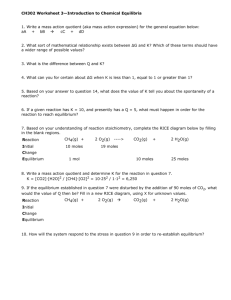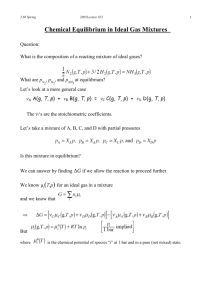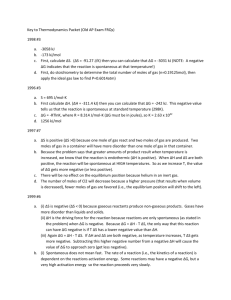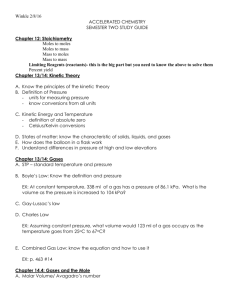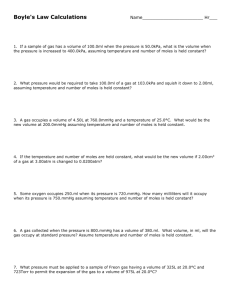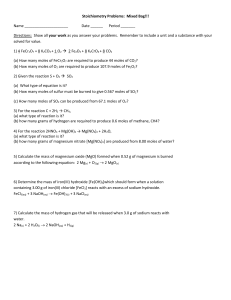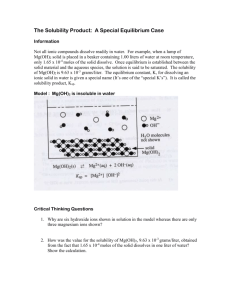Monday, Jan 28
advertisement
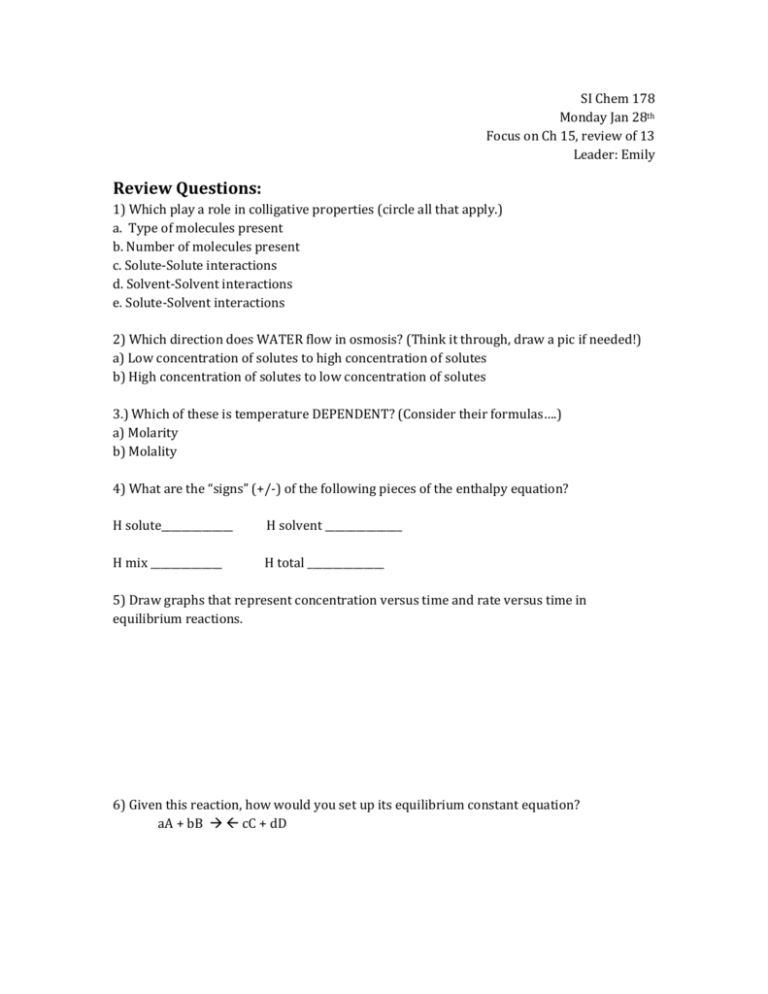
SI Chem 178 Monday Jan 28th Focus on Ch 15, review of 13 Leader: Emily Review Questions: 1) Which play a role in colligative properties (circle all that apply.) a. Type of molecules present b. Number of molecules present c. Solute-Solute interactions d. Solvent-Solvent interactions e. Solute-Solvent interactions 2) Which direction does WATER flow in osmosis? (Think it through, draw a pic if needed!) a) Low concentration of solutes to high concentration of solutes b) High concentration of solutes to low concentration of solutes 3.) Which of these is temperature DEPENDENT? (Consider their formulas….) a) Molarity b) Molality 4) What are the “signs” (+/-) of the following pieces of the enthalpy equation? H solute______________ H solvent _______________ H mix ______________ H total _______________ 5) Draw graphs that represent concentration versus time and rate versus time in equilibrium reactions. 6) Given this reaction, how would you set up its equilibrium constant equation? aA + bB cC + dD New Stuff: Suggested probs from Chapter 15: 2, 3, 6, 15a, 17, 24, 32, 34, 37, 44, 51, 52, 56 15.24 Parts a and b. Relating Kc and Kp. What is the equation relating Kp and Kc? How was it derived? Given this reaction and Kc, calculate Kp. Also, which side, (products or reactants,) does it favor? Is it homogeneous? 2H2 (g) + S2 (g) 2H2S (g) The Kc @ 700 Deg C = 1.08*10^7. 15.33 Let’s make methanol. Equation: CO (g) + 2H2 (g) CH3OH (g) - 2L vessel @ equilibrium at 500K - 0.0406 moles of CH3OH, 0.170 moles of CO, and 0.302 moles of H2 What do you need to do first in this case!? 15.37 Practicing with ICE tables. Equation: 2NO (g) + 2H2 (g) N2 (g) + 2H20 (g) 1L vessel at 300K Initially: 0.10 moles NO, 0.050 moles of H2 and 0.10 moles of H2O At equilibrium: [NO]= 0.062M
